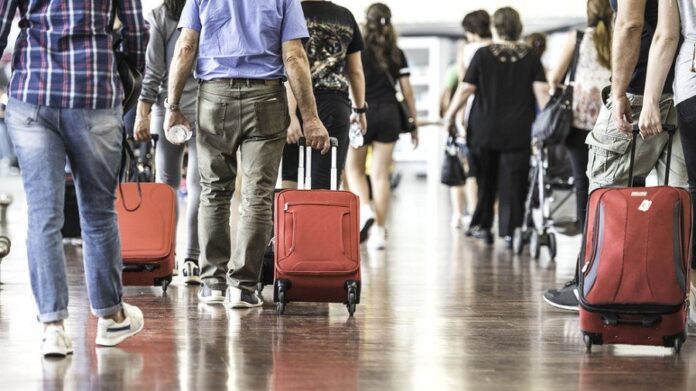The crowds of travelers filling airports in many parts of the world this summer are a sign of what’s ahead for tourism. By 2033, travel is set to become a $15.5 trillion industry—accounting for more than 11.6% of the global economy. This represents a 50% increase over its $10 trillion value in 2019, when travel represented 10.4% of the world’s gross domestic product, according to Bloomberg.
The 10-year forecast comes from the World Travel & Tourism Council (WTTC), the leading advocacy group dedicated to quantifying the industry’s economic impact. Although it was released in May as part of a 2023 World Economic Impact report on travel, the data hasn’t circulated beyond a small set of industry executives until now.
The report breaks down the economic contributions of the world’s major tourism markets and reveals the top five most powerful travel and tourism economies as of 2022 in terms of GDP contribution. These remained the same as pre-2019: the US, China, Germany, UK and Japan, with Japan overtaking the UK in the most recent list. France, Mexico, Italy, India and Spain rounded out the top 10.
The report also includes figures on travel and tourism’s contribution to the labor market: As a whole, the industry will employ up to 430 million people by 2033, compared with 334 million in 2019. That accounts for roughly 1 of every 9 jobs globally.
It’s not just that travel represents an enormous slice of the global economy, it’s also growing far faster than the economy at large.
“Economists are saying that the global GDP is going to grow on an annualized basis about 2.6% a year,” says Julia Simpson, president and chief executive officer at the World Travel & Tourism Council, speaking to Bloomberg from her office in New York. “In travel and tourism, we’re expecting [annual growth of] about 5.1%.”
Another projection from the WTTC points to big changes afoot, Simpson adds: Over the next 10 years, the US travel economy, which is the largest in the world in terms of its annual $2 trillion in total economic output, will lose its crown to China.
In 2033, China’s travel sector is forecast to contribute $4 trillion and will make up 14.1% of the Chinese economy. By contrast, the US industry is projected to reach $3 trillion and will represent 10.1% of the US economy. (These figures represent both the amount spent in-country by international visitors and how much citizens of each country spend on their own travel abroad.)
Pre-pandemic, Chinese travelers represented 14.3% of global outbound travel spending; their delayed return to international travel, thanks to extended border closures that only lifted in January 2023 and ongoing passport and visa processing delays, has hampered the rebound. But the rest of the world has compensated. Latin America, North America and Europe have driven a strong enough recovery, the WTTC’s report shares, that the industry expects to be almost back to 2019 levels by the end of this year.
Once Chinese travelers return in full force, which is expected by 2024, it will kick off another significant wave of growth for global tourism—with the Chinese share of global outbound travel spending predicted to reach 22.3% by 2033.
Even the short-term outlook for travel paints a bullish picture. In data examining more than $63.6 billion in transactions, Virtuoso, a network of more than 20,000 luxury travel advisers, reported on Aug. 16 that its sales in the first half of 2023 resulted in a 69% uptick compared with 2019 levels. And with more people booking trips further out, the company is already seeing a 107% increase in sales for 2024 and early 2025, compared with what was on the books with similar advance notice in 2019 and early 2020.
Virtuoso’s data points to a spike in nature-based travel, including scientific expeditions with researchers to Antarctica and the Galapagos. The WTTC’s Simpson agrees, saying that while she’s noticed a real return to cities, there’s also increased appetite for lesser-known destinations, such as Bulgaria and Slovenia. “Travelers are getting more adventurous. They want to really try and see different places.”
These shifts plus bureaucratic hurdles have left the giant US industry lagging behind its competitors. But stateside jobs are on the rise. According to an as-yet unpublished WTTC report on America’s travel sector, the country will see 21 million people working in travel and tourism by 2033—up from 17.5 million in 2019—representing 1 in 8 jobs across the country.


